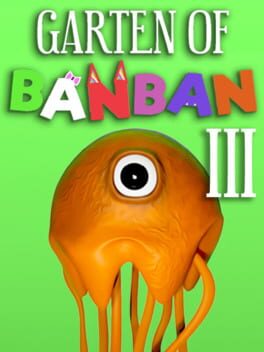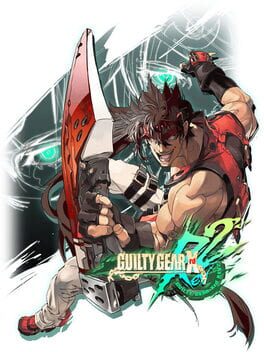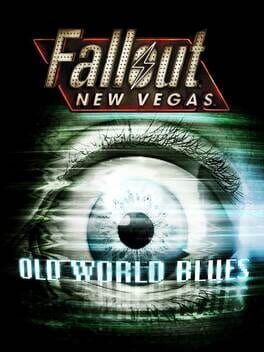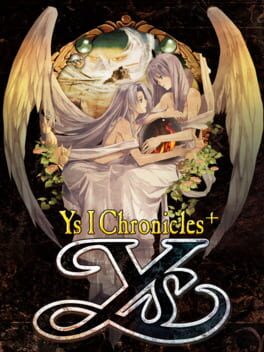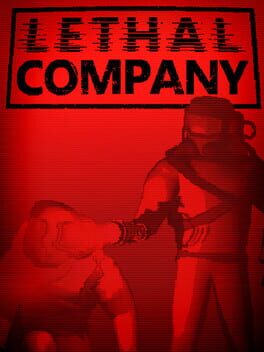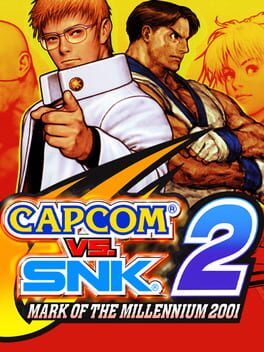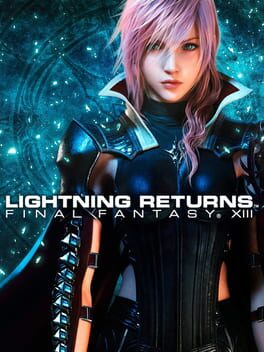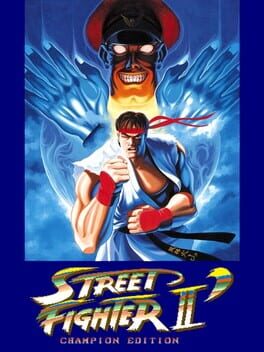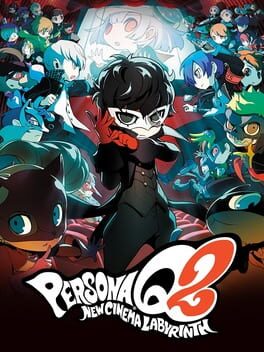maradona
2023
2013
It was really cool finding out that the guy from that gif "oh my oh my goodness gracious (1 big hot man)" is just a random dude that shows up out of nowhere to break a wall, and then leaves.
2022
An open world soulslike game, with a horse companion that can double jump, in a diverse open world written by George R.R Martin, where you can climb every mountain, sounds like a concept an unfunny gamer would come up with to post in 9gag. The post in question, would be called “The most EPIC souls game of all time”, and it would manage to get 32 upvotes and, a single comment saying “Why not at trending, sir?”, by a username with the ever so infamous Ugandan Knuckles as their profile pic.
Elden Ring is in fact a real game that was released just the other day, and made me and many others simply addicted to it, even if it feels unfinished and straight up broken sometimes. The foundation and feel of Elden Ring are so absurdly strong and well made that even when fighting the same optional boss with 3 attacks for the 4th time, or spending 10 minutes looking for invisible walls in a place that you will never go back to, or just wandering with your horse for 5 minutes looking for something cool besides a bunch of weak enemies scattered in the overworld to grab my attention, I never actually felt bored. To properly explain how they achieved this secret formula, which we’ll be seeing more in the future for sure, we have to talk about how and why they decided for a more open world approach.
“Nintendo hire this man” was a comment made by an anonymous on July 6, 2018, in a 4chan thread dedicated to mocking pseudo photorealistic renders and HD mods of Nintendo characters. The expression became iconic mostly for sounding like something an overly enthusiastic Nintendo fan would say, hoping that the company would change their usual conservative game and visual design approach for a more modern and intricate one, similar to what the majority of triple A’s were doing for years until that point. These feelings have existed before, but were never as prevalent, like with those "This will be x graphics in 2013" memes who mocked people who thought Nintendo would eventually invest more in the hardware side of the consoles during the Wii and Wii U gens, in order to produce more exuberant graphics. The term started to be later used to make fun of fan projects that implemented that lifelike aesthetic, and eventually moved on for even those that didn’t.
3D open world games exploded in popularity in the late 00’s, which drove fans to take their own unique take on some Nintendo franchises that didn’t get the proper treatment. The Zelda franchise was the company’s closest shot at it, as games up until that point were almost ideally open world, however you always had to do certain stuff in a specific order, similarly to a progression in a metroidvania title, which surely fulfilled the need of exploration for some, but many others still asked for a progression system around that instead of it being relegated to just side content. The idea of an ideally open world with Mario, Metroid, and most noticeably Pokémon, became the targets of multiple concepts, fan games, hacks, and even tech demos that tried to break the usual design conventions, mostly focusing around player freedom and diverse replayability.
One title that was famous during the fangaming period although not influencing much on the topic, was Demon Souls. Released in 2009, this PlayStation 3 classic uses what might resemble to be a chapter structure at first, however, utilizes inner-connectivity between places in a more similar structure of a crossroad, as in the player can choose to which road they will delve into, with subsequent paths leading for more areas in the same road. You could and sometimes should, go back to the point of origin and follow a different base direction than before while still not finishing the one you started, as those roads never connected to each other. It might not be as much of an open field when compared to previous Zelda games like Wind Waker or Ocarina of Time, but the branching paths gave a lot more progression flexibility and expression that Nintendo titles lacked.
Released 2 years after the game that ironically had one of the most “soulless” remakes of all time, Dark Souls requires no introduction at this point. The game allowed the player to go to a variety of areas early on, with somewhat contrasting levels of difficulty to the point that the path you chose was entirely up to you, eventually becoming a question of how much are you willing to challenge yourself. The intricacy of Dark Souls connectivity became a major selling point, as areas were tightly attached to each other, giving this atmospheric sensation that made the world feel more vivid. The way in which you’d reach some places like Valley of Drakes or Darkwood Basin depended entirely on what trajectory you wanted to follow this time.
Although that might seem as a definitive and unquestionable upgrade, the clarity in where you can and can’t go can be infuriating at times, as well as the frustrations of wandering aimlessly. However, just the knowledge in the back of your head that you could travel the entire map without the use of a fast travel system, a necessary mechanic utilized by games with this caliber, like The Legend of Zelda for example, ended up adding a lot to the atmosphere, as those games rarely ever went for such a pragmatic approach in most areas.
One sector that I think most will agree was a direct improvement however, was the fact that the areas in Dark Souls gave you, sometimes, multiple options in reaching their destination. Sure, some places like the Catacombs and Anor Londo may have one definitive manner in reaching their destination, but other locations like Blighttown or Darkwood Garden offer a multitude of inner ways, the first offering a variety of inner places to run from the chaotic domain, and the latter just being so open with different enemies scattered around, to the point that if you are aware of their placement, you could avoid every single encounter.
Sequels also came for the “Soulsborne” franchise, with Dark Souls 2 attempting something similar to Demon Souls, this time with an area, funnily enough, actually called crossroads. There were sections that lead to some other ones, like Huntsman’s Copse or Doors of Pharros, but most areas lead to places that mostly didn’t go anywhere beyond themselves, the only exception being Lost Bastille that could be accessed by 2 different ways, but it’s likely only there for show. Bloodborne came one year later and tried to improve and streamline a bit of it’s Dark Souls inheritance, expanding it's connected pathing while also not forcing the player to venture through the entire map as much, having almost half of its areas being completely optional.
Despite taking inspiration from different philosophies, both of these titles decided to keep the approach of having multiple ways available to walk in a designated section, with their own unique ideals of course. Bloodborne improved the previously somewhat used shortcuts, unlocking ladders and elevators in areas like Cathedral Ward or Forbidden Woods felt like making genuine progress not only by unlocking new areas, but also by connecting them, creating your own crossroads of some sort. Dark Souls 2 tried a more pragmatic approach, with levels requiring you to pass through the completely opposite directions to obtain one specific item or perform some sort of task, so that you can go back and advance normally, which leads to levels giving a weirdly retro vibe, as they seem similar to unlocking puzzles in old point and click video games.
Dark Souls 3 tried a more streamlined approach aimed towards beginners of the series with an overall universal balance, which gives an extremely simplified feeling that the navigation built throughout the years received a direct and undisputable downgrade. However, despite only having 3 branching points that lead to non connected places with 2 standalone optional ones, the areas themselves are made to be more open ended, like Smoldering Lake that gave you a multitude of options and allowing you to fight the boss without the need for exploration, and my favorite area in the series: Grand Archives. This late game section allows you to unlock different layers of elevators and stairs, while still using the bonfire in the bottom floor, giving a feeling of grandeur and conquering whenever you return to where you started, eventually reaching its top, from which you can still see the arduous path you took.
With the Launch of Sekiro a couple of years later, From Software decided to just improve in what they had with Dark Souls 3, improving in its highs with layers of verticality being available with the use of a grappling hook, but also adopting its lows as they just borrowed the same map philosophy. Another deliberate choice that may explain why they went for a more linear approach is the fact that the game was made to feel more cinematic, with beautiful sequences that are way more in-your-face about their magnitude, like the fight against Giant Serpents or Divine Dragon, a story told directly that everyone would be able to follow, and a complete overhaul in sound design and music genre to feel more authentic with the aesthetic.
Eventually, as the years would tell, gamers who leaned toward soulslike games would rather have freedom than gameplay balance. In conclusion, they appreciated having places being connected, and an option to neglect the use of fast travel as the definitive way of progressing, and approaching areas in multiple ways. Few people knew however, that being developed while Sekiro was midway through production, was a title that instead of trying to revolutionize their approach to combat, would attempt something even more daring.
Breath of the Wild, released in 2017, was the culmination of every knowledge that Nintendo gathered through the years, directly addressing the crowd that wished for a more exploratory experience, having only a somewhat intended first path that the game suggests you to give you a feeling of what’s to come, while still being just suggested. Whenever possible with modern design conventions, Nintendo would simplify it, gamify it, and make it look more distinct to the player, which we still appreciate and feel the impact years later. There are some elements that can be attributed as a souls influence, mostly with parry focused combat or the Lynels, but when asked about it, the series director Hidetaka Miyazaki, stated in an interview to Glixel that his game series weren’t even comparable to the sheer magnitude of Hidemaro Fujibayashi’s masterpiece, and claimed that any resemblance was just the Zelda franchise setting the footprints for 3D action games once again. We know for a fact that Elden Ring started development in the same year Breath of the Wild was released, which means that there is a chance that the following sentence might have been said:
“ From Software, Hire this Man “ - Hidetaka Miyazaki, regarding George R.R. Martin.
The answer to how to design areas allowing for more player freedom and expression while still being accessible for newer players became clear after taking a glance in Zelda’s first sandbox world: conurbation with path suggestion. From the very start of the game you have access in theory to 8 out of 11 areas without ever needing to fight a boss, however, for most players the number will be reduced to 5, as it requires advance knowledge in the game’s pathing. Besides rewarding players for mastering the game’s routes, which is good in its own right, the replayability of Elden Ring became by nature absurdly higher than those of previous titles, and allows players from every skill level to have a blast navigating in whichever choice they see fit.
For convenience purposes, the suggested path for a usual non turbulent progression in the map is displayed by arrows pointing in the map towards the next “recommended one”. As a treat for those who want a challenge or a change of pace, the game gives you plenty of ways to go other areas, like for example, reaching one of the game’s hardest areas by following the first road displayed in your map in a direction that’s opposite of the arrow in the bonfire pointing at. The areas have a clear and distinct cut between them, best exemplified in places like Caelid, which is neighbor of the starting area, that display a red crimson sky the moment you step in, showing that the following path will lead to suffering while also taunting you to give it a shot at its misery.
Just like Breath of the Wild, Elden Ring has a gigantic map full of curious locations, begging for you to find them, explore them to the maximum, and repeat the process with other ones. Instead of having an insane amount of shrines as the game's small dungeons, Miyazaki opted for fewer locations that feel more complete and fully realized, sometimes even having connections to other similar places like with the underground cave system. One of my favorite examples, without spoiling it, is what happens with Sifora Well after some specific pseudo-optional boss is defeated, genuinely some mind blowing exploration.
A proper jump button was also finally added this time, which made the very idea of leaping a tool that gives you more to work with while exploring and fighting, instead of a frustrating mechanic only ever used in brief and janky platforming sections. The area's verticality also increased dramatically, which can be perfectly seen in the game’s very first castle area, Stormveil castle. I’ve spent 2 hours in this castle, exploring the best I could as it took me a considerable time to realize I could jump higher to reach some areas that could only be accessed if you were playing Sekiro. There could be more, but I ended up finding 4 ways to reach the castle’s final area, where the inevitably oppressive boss fight awaited me. One of those routes can be accessed by walking normally throughout the area, other will require you to walk the same path but perform a platforming section that wouldn’t have been able to in previous titles, one will require you to take a completely different road that you can unlock with the use of an elevator in the middle of the first route, and the final one can be accessed by doing somewhat of a NPC side quest available the moment you reach the castle’s entrance.
Another thing important to mention is the overwhelmingly positive reception Elden Ring received when the foundation of how they would allow their areas for navigation was made public knowledge, obtaining 2 awards in the infamous yet sometimes adequate Game Awards, being the “Most Anticipated Game of the Year” in both 2020 and 2021. Elden Ring can be seen more clearly nowadays as a passion project from a director that grew up being inspired by Zelda Games, receiving another blessing in a time of need and arguably surpassing what he was inspired from. Under no other context, would a writer as prestigious as George R.R. Martin be invited to assist with a fantasy setting world building, his specialty, particularly after the devastating backlash from the adaptation of his most notorious work, Game of Thrones.
And now that we have finally established how we reached this point in approaching areas, and allowing the player to carve their own path, how’s the game beyond that?
Idk I think it's pretty good :)
Elden Ring is in fact a real game that was released just the other day, and made me and many others simply addicted to it, even if it feels unfinished and straight up broken sometimes. The foundation and feel of Elden Ring are so absurdly strong and well made that even when fighting the same optional boss with 3 attacks for the 4th time, or spending 10 minutes looking for invisible walls in a place that you will never go back to, or just wandering with your horse for 5 minutes looking for something cool besides a bunch of weak enemies scattered in the overworld to grab my attention, I never actually felt bored. To properly explain how they achieved this secret formula, which we’ll be seeing more in the future for sure, we have to talk about how and why they decided for a more open world approach.
“Nintendo hire this man” was a comment made by an anonymous on July 6, 2018, in a 4chan thread dedicated to mocking pseudo photorealistic renders and HD mods of Nintendo characters. The expression became iconic mostly for sounding like something an overly enthusiastic Nintendo fan would say, hoping that the company would change their usual conservative game and visual design approach for a more modern and intricate one, similar to what the majority of triple A’s were doing for years until that point. These feelings have existed before, but were never as prevalent, like with those "This will be x graphics in 2013" memes who mocked people who thought Nintendo would eventually invest more in the hardware side of the consoles during the Wii and Wii U gens, in order to produce more exuberant graphics. The term started to be later used to make fun of fan projects that implemented that lifelike aesthetic, and eventually moved on for even those that didn’t.
3D open world games exploded in popularity in the late 00’s, which drove fans to take their own unique take on some Nintendo franchises that didn’t get the proper treatment. The Zelda franchise was the company’s closest shot at it, as games up until that point were almost ideally open world, however you always had to do certain stuff in a specific order, similarly to a progression in a metroidvania title, which surely fulfilled the need of exploration for some, but many others still asked for a progression system around that instead of it being relegated to just side content. The idea of an ideally open world with Mario, Metroid, and most noticeably Pokémon, became the targets of multiple concepts, fan games, hacks, and even tech demos that tried to break the usual design conventions, mostly focusing around player freedom and diverse replayability.
One title that was famous during the fangaming period although not influencing much on the topic, was Demon Souls. Released in 2009, this PlayStation 3 classic uses what might resemble to be a chapter structure at first, however, utilizes inner-connectivity between places in a more similar structure of a crossroad, as in the player can choose to which road they will delve into, with subsequent paths leading for more areas in the same road. You could and sometimes should, go back to the point of origin and follow a different base direction than before while still not finishing the one you started, as those roads never connected to each other. It might not be as much of an open field when compared to previous Zelda games like Wind Waker or Ocarina of Time, but the branching paths gave a lot more progression flexibility and expression that Nintendo titles lacked.
Released 2 years after the game that ironically had one of the most “soulless” remakes of all time, Dark Souls requires no introduction at this point. The game allowed the player to go to a variety of areas early on, with somewhat contrasting levels of difficulty to the point that the path you chose was entirely up to you, eventually becoming a question of how much are you willing to challenge yourself. The intricacy of Dark Souls connectivity became a major selling point, as areas were tightly attached to each other, giving this atmospheric sensation that made the world feel more vivid. The way in which you’d reach some places like Valley of Drakes or Darkwood Basin depended entirely on what trajectory you wanted to follow this time.
Although that might seem as a definitive and unquestionable upgrade, the clarity in where you can and can’t go can be infuriating at times, as well as the frustrations of wandering aimlessly. However, just the knowledge in the back of your head that you could travel the entire map without the use of a fast travel system, a necessary mechanic utilized by games with this caliber, like The Legend of Zelda for example, ended up adding a lot to the atmosphere, as those games rarely ever went for such a pragmatic approach in most areas.
One sector that I think most will agree was a direct improvement however, was the fact that the areas in Dark Souls gave you, sometimes, multiple options in reaching their destination. Sure, some places like the Catacombs and Anor Londo may have one definitive manner in reaching their destination, but other locations like Blighttown or Darkwood Garden offer a multitude of inner ways, the first offering a variety of inner places to run from the chaotic domain, and the latter just being so open with different enemies scattered around, to the point that if you are aware of their placement, you could avoid every single encounter.
Sequels also came for the “Soulsborne” franchise, with Dark Souls 2 attempting something similar to Demon Souls, this time with an area, funnily enough, actually called crossroads. There were sections that lead to some other ones, like Huntsman’s Copse or Doors of Pharros, but most areas lead to places that mostly didn’t go anywhere beyond themselves, the only exception being Lost Bastille that could be accessed by 2 different ways, but it’s likely only there for show. Bloodborne came one year later and tried to improve and streamline a bit of it’s Dark Souls inheritance, expanding it's connected pathing while also not forcing the player to venture through the entire map as much, having almost half of its areas being completely optional.
Despite taking inspiration from different philosophies, both of these titles decided to keep the approach of having multiple ways available to walk in a designated section, with their own unique ideals of course. Bloodborne improved the previously somewhat used shortcuts, unlocking ladders and elevators in areas like Cathedral Ward or Forbidden Woods felt like making genuine progress not only by unlocking new areas, but also by connecting them, creating your own crossroads of some sort. Dark Souls 2 tried a more pragmatic approach, with levels requiring you to pass through the completely opposite directions to obtain one specific item or perform some sort of task, so that you can go back and advance normally, which leads to levels giving a weirdly retro vibe, as they seem similar to unlocking puzzles in old point and click video games.
Dark Souls 3 tried a more streamlined approach aimed towards beginners of the series with an overall universal balance, which gives an extremely simplified feeling that the navigation built throughout the years received a direct and undisputable downgrade. However, despite only having 3 branching points that lead to non connected places with 2 standalone optional ones, the areas themselves are made to be more open ended, like Smoldering Lake that gave you a multitude of options and allowing you to fight the boss without the need for exploration, and my favorite area in the series: Grand Archives. This late game section allows you to unlock different layers of elevators and stairs, while still using the bonfire in the bottom floor, giving a feeling of grandeur and conquering whenever you return to where you started, eventually reaching its top, from which you can still see the arduous path you took.
With the Launch of Sekiro a couple of years later, From Software decided to just improve in what they had with Dark Souls 3, improving in its highs with layers of verticality being available with the use of a grappling hook, but also adopting its lows as they just borrowed the same map philosophy. Another deliberate choice that may explain why they went for a more linear approach is the fact that the game was made to feel more cinematic, with beautiful sequences that are way more in-your-face about their magnitude, like the fight against Giant Serpents or Divine Dragon, a story told directly that everyone would be able to follow, and a complete overhaul in sound design and music genre to feel more authentic with the aesthetic.
Eventually, as the years would tell, gamers who leaned toward soulslike games would rather have freedom than gameplay balance. In conclusion, they appreciated having places being connected, and an option to neglect the use of fast travel as the definitive way of progressing, and approaching areas in multiple ways. Few people knew however, that being developed while Sekiro was midway through production, was a title that instead of trying to revolutionize their approach to combat, would attempt something even more daring.
Breath of the Wild, released in 2017, was the culmination of every knowledge that Nintendo gathered through the years, directly addressing the crowd that wished for a more exploratory experience, having only a somewhat intended first path that the game suggests you to give you a feeling of what’s to come, while still being just suggested. Whenever possible with modern design conventions, Nintendo would simplify it, gamify it, and make it look more distinct to the player, which we still appreciate and feel the impact years later. There are some elements that can be attributed as a souls influence, mostly with parry focused combat or the Lynels, but when asked about it, the series director Hidetaka Miyazaki, stated in an interview to Glixel that his game series weren’t even comparable to the sheer magnitude of Hidemaro Fujibayashi’s masterpiece, and claimed that any resemblance was just the Zelda franchise setting the footprints for 3D action games once again. We know for a fact that Elden Ring started development in the same year Breath of the Wild was released, which means that there is a chance that the following sentence might have been said:
“ From Software, Hire this Man “ - Hidetaka Miyazaki, regarding George R.R. Martin.
The answer to how to design areas allowing for more player freedom and expression while still being accessible for newer players became clear after taking a glance in Zelda’s first sandbox world: conurbation with path suggestion. From the very start of the game you have access in theory to 8 out of 11 areas without ever needing to fight a boss, however, for most players the number will be reduced to 5, as it requires advance knowledge in the game’s pathing. Besides rewarding players for mastering the game’s routes, which is good in its own right, the replayability of Elden Ring became by nature absurdly higher than those of previous titles, and allows players from every skill level to have a blast navigating in whichever choice they see fit.
For convenience purposes, the suggested path for a usual non turbulent progression in the map is displayed by arrows pointing in the map towards the next “recommended one”. As a treat for those who want a challenge or a change of pace, the game gives you plenty of ways to go other areas, like for example, reaching one of the game’s hardest areas by following the first road displayed in your map in a direction that’s opposite of the arrow in the bonfire pointing at. The areas have a clear and distinct cut between them, best exemplified in places like Caelid, which is neighbor of the starting area, that display a red crimson sky the moment you step in, showing that the following path will lead to suffering while also taunting you to give it a shot at its misery.
Just like Breath of the Wild, Elden Ring has a gigantic map full of curious locations, begging for you to find them, explore them to the maximum, and repeat the process with other ones. Instead of having an insane amount of shrines as the game's small dungeons, Miyazaki opted for fewer locations that feel more complete and fully realized, sometimes even having connections to other similar places like with the underground cave system. One of my favorite examples, without spoiling it, is what happens with Sifora Well after some specific pseudo-optional boss is defeated, genuinely some mind blowing exploration.
A proper jump button was also finally added this time, which made the very idea of leaping a tool that gives you more to work with while exploring and fighting, instead of a frustrating mechanic only ever used in brief and janky platforming sections. The area's verticality also increased dramatically, which can be perfectly seen in the game’s very first castle area, Stormveil castle. I’ve spent 2 hours in this castle, exploring the best I could as it took me a considerable time to realize I could jump higher to reach some areas that could only be accessed if you were playing Sekiro. There could be more, but I ended up finding 4 ways to reach the castle’s final area, where the inevitably oppressive boss fight awaited me. One of those routes can be accessed by walking normally throughout the area, other will require you to walk the same path but perform a platforming section that wouldn’t have been able to in previous titles, one will require you to take a completely different road that you can unlock with the use of an elevator in the middle of the first route, and the final one can be accessed by doing somewhat of a NPC side quest available the moment you reach the castle’s entrance.
Another thing important to mention is the overwhelmingly positive reception Elden Ring received when the foundation of how they would allow their areas for navigation was made public knowledge, obtaining 2 awards in the infamous yet sometimes adequate Game Awards, being the “Most Anticipated Game of the Year” in both 2020 and 2021. Elden Ring can be seen more clearly nowadays as a passion project from a director that grew up being inspired by Zelda Games, receiving another blessing in a time of need and arguably surpassing what he was inspired from. Under no other context, would a writer as prestigious as George R.R. Martin be invited to assist with a fantasy setting world building, his specialty, particularly after the devastating backlash from the adaptation of his most notorious work, Game of Thrones.
And now that we have finally established how we reached this point in approaching areas, and allowing the player to carve their own path, how’s the game beyond that?
Idk I think it's pretty good :)
2023
Gospel of Matthew 24:27: "For as the Lightning cometh out of the east, and shineth even unto the west; so shall also the coming of the Son of man"
Being the last game of arguably the most polarizing trilogy in video games, the Final Fantasy XIII saga, Lighting Returns was a title that had already received mixed reviews by journalists while it was still in development. Considering how XIII-2 improved in nearly every aspect of the criticism that XIII received, fans were surprisingly hopeful, until news went out that it would be employing the most radical changes ever seen to the traditional FF formula. Despite having a gameplay style mostly resembling Majora’s Mask by being a single lonely character clashing against time and current society, the philosophical implications of Lightning Returns run much deeper than that, although not being as obvious, but impossible to ignore once you start to realize how it ties in with the trilogy’s themes. To properly explain how this game’s subjects became so misunderstood (which I hope you don’t mind spoilers about), we first have to talk about the privatization of stress.
Although the game wasn’t made as a 1 to 1 capitalist critique, it mimics themes of stress and solitude in a desperate narrative reminiscent of those in modern urban life scenarios. It is no coincidence that one of the trilogy’s most criticized aspects of not properly handling cities, side quests and NPC’s is directly answered by having most of the game be spent in 2 fully fledged cities that always feel awake 24/7. Not only that but all of the quests in these places feel very mundane and uneventful, usually regarding easy to solve social problems as someone from the outside or simply a miscommunication between people who find themselves stuck in their own struggles to maintain a meaningless routine.
You are tasked early on to face a former friend after not being able to recognize them through the years, while the only person you used to care about becomes more hostile towards you because of your life choices, all in all with an inner angsty teenager sense of persecution, proved to be factually right, that the entire world is against you. This is the closest I have ever seen in a power fantasy game, especially one that deep down recycles the same classic formula of “kill god” narrative, dealing with such a down to earth theme of self-indulging despair and hopelessness that isn’t solved miraculously by external magical sources. The foundation of the premise is something we can all relate to, as even if we haven’t experienced all those 3 together, something in our brain just seems to understand perfectly how messy it would be. Your inner struggles are irrelevant to your divine task however, and you’re left to conquer your own psychological problems by yourself, as the burden of carrying out your divine duty never cared for your well being, giving a complete uneasy feeling of possibly being a discardable chosen one.
“ Relentless monitoring is closely linked to precarity. And, as Tobias van Veen argues, precarious work places ‘an ironic yet devastating’ demand on the labourer. On the one hand work never ends: the worker is always expected to be available, with no claims to a private life. On the other hand the precariat are completely expendable, even when they have sacrificed all autonomy to keep their jobs. “ - Mark Fisher
Stress is the core gameplay element of this game, as it always runs in a hellish wicked timer, waiting for you to make a grave mistake and ponder whether to continue or not, which can be seen by some as even more cruel than simply ending it. Necessary events to the game’s story can be only accessed in a specific time window, as well as NPC’s sidequests and routines, meaning that you’ll have to do some serious planning if you don’t want to miss a crucial bit in your adventure.
From the very start you are told to finish the main quests in under a week with a high sense of urgency, however you’ll quickly notice that by rushing the first main story in the initial city, the gap between how strong you are and how intense the fights can get is pretty substantial. Not spoiling what happens after one week. but I sincerely hope you prepared yourself for it. The only way to increase your stats, and your time, is by finishing quests, not by trading punches, which pushes you to pursue the game’s side content for small gains in order to properly be able to handle the main ones for an even higher stat gain. Juggling with these two, you’ll find yourself in situations with near conflicting times that don’t seem to have an objectively best way out, effectively creating the perfect complete opposite experience of a sandbox game.
" Daily life becomes precarious. Planning ahead becomes difficult, routines are impossible to establish. Work, of whatever sort, might begin or end anywhere at a moment’s notice, and the burden is always on the worker to create the next opportunity and to surf between roles. The individual must exist in a state of constant readiness. Predictable income, savings, the fixed category of ‘occupation’: all belong to another historical world. " - Mark Fisher
Let’s suppose that you need to sneak your way through a certain castle until 11:00 pm, so you decide to be free until 10:00 pm to not lose such an occasion. You hope to finish an investigation sidequest, with no guarantees, until 9:30 pm, which is when you think the NPC leaves, as when you tried to interact with him the other way at 10:00 pm he wasn’t there but you remember passing him by at 8:00 pm. While thinking about that, you also make a mental note to fetch the rewards for another sidequest at 6:30 pm in another city that takes 30 min by train, meaning that either one hour traveling or a massive amount of spell points, spent in a teleportation magic, will be lost. You also ponder whether or not you should take that optional boss fight at 6:00 pm, as you want to save your limited spells for later, dreaming about its massive loot reward that could be useful later on. All of that is happening, at 11:00 am, having no set plans for 12 hours to come, while not precisely remembering what you forgot to do yesterday, without realizing that you didn’t check that your secret royal entrance closes at 9:00 pm.
The only way you can stop the clock is by fighting, either by being directly in combat, or using precious spell points gained after a battle. Your own blood becomes partially meaningless, as healing sources are abundant, and the punishment for running away or losing becomes the same: The loss of 1 ingame hour. Our own life becomes an end goal that is not as impactful as the cycle we find ourselves in, independent if we are the main character in this story, as it’s meaningless to the ordinary citizen stuck in this vicious cycle. The dehumanizing cogs of time can’t stop running, as someone or something requires it to, because even if it’s not a natural nor necessary way to handle a civilization, it was imposed onto us the moment we were born.
" The tendency today is for practically all forms of work to become precarious. As Franco Berardi puts it, ‘Capital no longer recruits people, but buys packets of time, separated from their interchangeable and occasional bearers’. Such ‘packets of time’ are not conceived of as having a connection to a person with rights or demands: they are simply either available or unavailable. " - Mark Fisher
The majority of the game’s sidequest in one of the cities can be directly traced to monetary problems, directly or indirectly. Some are quite obvious, such as buying medication for someone poor as others refuse to acknowledge their existence, or being knowingly scammed daily by a desperate child while she tells her story in life. Some points, however, such as needing to talk or ask someone in the slums about anything at all, always carried a subtle connotation regarding the inherent cultural divide that is present. You see, even before monsters and cultists started to appear, the city used a system of applying ‘martial lawish’ gates to block out its poor parts, enforcing their place on a section with very little resources overall. The lack of access to other cities, terrain to expand, or even a way to get direct food and water without having to buy overpriced second hand ones by the city's traders, means that not only it was built, but also purposefully maintained as a hub of enforced poverty.
The other city, exuberant with richness everywhere, faces an entirely different and post-modern problem of being ‘bored’ by the virtue of having everything they so desire. Ranging from useless side quests to get materials that you can’t buy (only way to give them any value at this point) like the embarrassing chocobo girl one, or the amazingly cute chocobo baby ones. Serving as small first world problems that could be easily solved on their own, they are absurdly blown out of proportion, for being the only mild annoyance this egoistical and socially clueless bourgeois will face in their near ending lives. One quest in particular caught my attention, because it all boils down to a bunch of kids trying to have some fun by attempting to predict the future in which you’ll arrive to talk to them, joking about the concept of free will and pretending like they have some sort of special powers, when in fact they already have the most noticeable one out there: privilege. Having to help such a carefree society that turned a blind eye into a possible perpetual state of wastefulness while the rest of the world is still facing inequalities, is heartbreaking, specially when considering Lightning’s own problems, that discredits what you’re repeatedly told about being the world’s only hope, by giving you a slight nod that no matter who you are, divinity is not a virtue under capitalism.
" If the shift from Fordism to post-Fordism had its psychic casualties, then post-Fordism has innovated whole new modes of stress. Instead of the elimination of bureaucratic red tape promised by neoliberal ideologues, the combination of new technology and managerialism has massively increased the administrative stress placed on workers, who are now required to be their own auditors (which by no means frees them of the attentions of external auditors of many kinds). Work, no matter how casual, now routinely entails the performance of meta-work: the completion of log books, the detailing of aims and objectives, the engagement in so-called `continuing professional development’. " - Mark Fisher
Lightning Returns is truly a special title in the list of video games that criticize capitalism indirectly, as its ending (no spoilers, don’t worry) doesn't follow the usual liberal notion that “if we get rid of the evil king, we can live forever happy with the good king”. Existing within a system that allows such people to even exist, and even worse, take over, turns into a fundamentally broken political structure that can adapt to the needs of those in power. No amount of boring and expository dialogue that aims to say “I had good intentions tho” could fix the inconsequential flaws of those who misused power in the past for their own benefit.
Soul harvesting is the ultimate consequence of a system based heavily upon materialism, where the need for one’s time, feelings and dedication can no longer fulfill such impossible to meet demands. In a society that finds itself at peace, forever cursed to not age, was it really so hard for people to come together in union? The only thought keeping this shambling community in such a chaotic state is the self-imposed fear that it could somehow get worse, even with the apocalypse blasting its ugly true colors upon the sky. Most saddening however, is when you realize this is what’s happening in our real world at this very moment. Churchill’s asinine phrase that capitalism is a boat sinking less than others, became ingrained in modern capitalists brains that refuse to acknowledge it’s main problems while trying to get rid of smaller ones, as supposedly it’s better to let a bomb explode slowly by not cutting a wire, than giving a shot to a method that could save us all.
Self imposed faith in the system is the downfall of a society that doesn’t ponder about its future, as being on the edge of insanity for centuries for never questioning the line of thinking that led to such a problem, is both saddening and fascinating. Greed kills, murders and slaughters those that try to oppose it, or just refuse to hail it as the ultimate goal in life. We treat God as a currency that blesses those already privileged ones with even more privilege, in a modern miracle supposedly called ‘meritocracy’. It’s only by rejecting the ideas of self imposed righteous workplace figures that we can debunk their cult, as the only foundation they have is blind faith accompanied by financial fear mongering.
" But this should not be a cause for lament; far from it. What we need to revive is not social formations that failed (and failed for reasons that progressives should be pleased about), but a political project that never really happened: the achievement of a democratic public sphere. Even in Blond’s work, the lineaments of a hegemonic shift can be discerned – in his startling repudiation of the core concepts of neoliberalism and his attack on managerialism; and in the concession that, contra Thatcher, it turns out that there is such a thing as society after all. Such moves give some indication of the extent to which – after the bank bail-outs – neoliberalism has radically lost credibility. " - Mark Fisher
The conclusion of Lighting Returns is an impossible one for us to meet, as it’s not only absurdly magical, but also displays a lot of light in a totally fantastical future that retroactively also fixes her own personal problems, the ultimate power fantasy move. Her external and internal troubles are fixed by punching them into the embodiment of everything that was wrong until that point, which is something I’d like to personally experience one day. You can’t make a revolution alone, much less disregard those who are in the wrong, for that a strong conviction can shed some well deserving light even in the worst of cases. The good thing about being an emotional wall during the entire story, is that you know how she must have felt in this journey’s end, in one of the most beautiful sequences I have ever seen in my entire life. We’ll have to learn from Lightning, and try our best to recreate such a sequence in our own real world, for it’s the only recipe of an ultimate utopia.
Godspeed Mark, thank you for changing my life.
Being the last game of arguably the most polarizing trilogy in video games, the Final Fantasy XIII saga, Lighting Returns was a title that had already received mixed reviews by journalists while it was still in development. Considering how XIII-2 improved in nearly every aspect of the criticism that XIII received, fans were surprisingly hopeful, until news went out that it would be employing the most radical changes ever seen to the traditional FF formula. Despite having a gameplay style mostly resembling Majora’s Mask by being a single lonely character clashing against time and current society, the philosophical implications of Lightning Returns run much deeper than that, although not being as obvious, but impossible to ignore once you start to realize how it ties in with the trilogy’s themes. To properly explain how this game’s subjects became so misunderstood (which I hope you don’t mind spoilers about), we first have to talk about the privatization of stress.
Although the game wasn’t made as a 1 to 1 capitalist critique, it mimics themes of stress and solitude in a desperate narrative reminiscent of those in modern urban life scenarios. It is no coincidence that one of the trilogy’s most criticized aspects of not properly handling cities, side quests and NPC’s is directly answered by having most of the game be spent in 2 fully fledged cities that always feel awake 24/7. Not only that but all of the quests in these places feel very mundane and uneventful, usually regarding easy to solve social problems as someone from the outside or simply a miscommunication between people who find themselves stuck in their own struggles to maintain a meaningless routine.
You are tasked early on to face a former friend after not being able to recognize them through the years, while the only person you used to care about becomes more hostile towards you because of your life choices, all in all with an inner angsty teenager sense of persecution, proved to be factually right, that the entire world is against you. This is the closest I have ever seen in a power fantasy game, especially one that deep down recycles the same classic formula of “kill god” narrative, dealing with such a down to earth theme of self-indulging despair and hopelessness that isn’t solved miraculously by external magical sources. The foundation of the premise is something we can all relate to, as even if we haven’t experienced all those 3 together, something in our brain just seems to understand perfectly how messy it would be. Your inner struggles are irrelevant to your divine task however, and you’re left to conquer your own psychological problems by yourself, as the burden of carrying out your divine duty never cared for your well being, giving a complete uneasy feeling of possibly being a discardable chosen one.
“ Relentless monitoring is closely linked to precarity. And, as Tobias van Veen argues, precarious work places ‘an ironic yet devastating’ demand on the labourer. On the one hand work never ends: the worker is always expected to be available, with no claims to a private life. On the other hand the precariat are completely expendable, even when they have sacrificed all autonomy to keep their jobs. “ - Mark Fisher
Stress is the core gameplay element of this game, as it always runs in a hellish wicked timer, waiting for you to make a grave mistake and ponder whether to continue or not, which can be seen by some as even more cruel than simply ending it. Necessary events to the game’s story can be only accessed in a specific time window, as well as NPC’s sidequests and routines, meaning that you’ll have to do some serious planning if you don’t want to miss a crucial bit in your adventure.
From the very start you are told to finish the main quests in under a week with a high sense of urgency, however you’ll quickly notice that by rushing the first main story in the initial city, the gap between how strong you are and how intense the fights can get is pretty substantial. Not spoiling what happens after one week. but I sincerely hope you prepared yourself for it. The only way to increase your stats, and your time, is by finishing quests, not by trading punches, which pushes you to pursue the game’s side content for small gains in order to properly be able to handle the main ones for an even higher stat gain. Juggling with these two, you’ll find yourself in situations with near conflicting times that don’t seem to have an objectively best way out, effectively creating the perfect complete opposite experience of a sandbox game.
" Daily life becomes precarious. Planning ahead becomes difficult, routines are impossible to establish. Work, of whatever sort, might begin or end anywhere at a moment’s notice, and the burden is always on the worker to create the next opportunity and to surf between roles. The individual must exist in a state of constant readiness. Predictable income, savings, the fixed category of ‘occupation’: all belong to another historical world. " - Mark Fisher
Let’s suppose that you need to sneak your way through a certain castle until 11:00 pm, so you decide to be free until 10:00 pm to not lose such an occasion. You hope to finish an investigation sidequest, with no guarantees, until 9:30 pm, which is when you think the NPC leaves, as when you tried to interact with him the other way at 10:00 pm he wasn’t there but you remember passing him by at 8:00 pm. While thinking about that, you also make a mental note to fetch the rewards for another sidequest at 6:30 pm in another city that takes 30 min by train, meaning that either one hour traveling or a massive amount of spell points, spent in a teleportation magic, will be lost. You also ponder whether or not you should take that optional boss fight at 6:00 pm, as you want to save your limited spells for later, dreaming about its massive loot reward that could be useful later on. All of that is happening, at 11:00 am, having no set plans for 12 hours to come, while not precisely remembering what you forgot to do yesterday, without realizing that you didn’t check that your secret royal entrance closes at 9:00 pm.
The only way you can stop the clock is by fighting, either by being directly in combat, or using precious spell points gained after a battle. Your own blood becomes partially meaningless, as healing sources are abundant, and the punishment for running away or losing becomes the same: The loss of 1 ingame hour. Our own life becomes an end goal that is not as impactful as the cycle we find ourselves in, independent if we are the main character in this story, as it’s meaningless to the ordinary citizen stuck in this vicious cycle. The dehumanizing cogs of time can’t stop running, as someone or something requires it to, because even if it’s not a natural nor necessary way to handle a civilization, it was imposed onto us the moment we were born.
" The tendency today is for practically all forms of work to become precarious. As Franco Berardi puts it, ‘Capital no longer recruits people, but buys packets of time, separated from their interchangeable and occasional bearers’. Such ‘packets of time’ are not conceived of as having a connection to a person with rights or demands: they are simply either available or unavailable. " - Mark Fisher
The majority of the game’s sidequest in one of the cities can be directly traced to monetary problems, directly or indirectly. Some are quite obvious, such as buying medication for someone poor as others refuse to acknowledge their existence, or being knowingly scammed daily by a desperate child while she tells her story in life. Some points, however, such as needing to talk or ask someone in the slums about anything at all, always carried a subtle connotation regarding the inherent cultural divide that is present. You see, even before monsters and cultists started to appear, the city used a system of applying ‘martial lawish’ gates to block out its poor parts, enforcing their place on a section with very little resources overall. The lack of access to other cities, terrain to expand, or even a way to get direct food and water without having to buy overpriced second hand ones by the city's traders, means that not only it was built, but also purposefully maintained as a hub of enforced poverty.
The other city, exuberant with richness everywhere, faces an entirely different and post-modern problem of being ‘bored’ by the virtue of having everything they so desire. Ranging from useless side quests to get materials that you can’t buy (only way to give them any value at this point) like the embarrassing chocobo girl one, or the amazingly cute chocobo baby ones. Serving as small first world problems that could be easily solved on their own, they are absurdly blown out of proportion, for being the only mild annoyance this egoistical and socially clueless bourgeois will face in their near ending lives. One quest in particular caught my attention, because it all boils down to a bunch of kids trying to have some fun by attempting to predict the future in which you’ll arrive to talk to them, joking about the concept of free will and pretending like they have some sort of special powers, when in fact they already have the most noticeable one out there: privilege. Having to help such a carefree society that turned a blind eye into a possible perpetual state of wastefulness while the rest of the world is still facing inequalities, is heartbreaking, specially when considering Lightning’s own problems, that discredits what you’re repeatedly told about being the world’s only hope, by giving you a slight nod that no matter who you are, divinity is not a virtue under capitalism.
" If the shift from Fordism to post-Fordism had its psychic casualties, then post-Fordism has innovated whole new modes of stress. Instead of the elimination of bureaucratic red tape promised by neoliberal ideologues, the combination of new technology and managerialism has massively increased the administrative stress placed on workers, who are now required to be their own auditors (which by no means frees them of the attentions of external auditors of many kinds). Work, no matter how casual, now routinely entails the performance of meta-work: the completion of log books, the detailing of aims and objectives, the engagement in so-called `continuing professional development’. " - Mark Fisher
Lightning Returns is truly a special title in the list of video games that criticize capitalism indirectly, as its ending (no spoilers, don’t worry) doesn't follow the usual liberal notion that “if we get rid of the evil king, we can live forever happy with the good king”. Existing within a system that allows such people to even exist, and even worse, take over, turns into a fundamentally broken political structure that can adapt to the needs of those in power. No amount of boring and expository dialogue that aims to say “I had good intentions tho” could fix the inconsequential flaws of those who misused power in the past for their own benefit.
Soul harvesting is the ultimate consequence of a system based heavily upon materialism, where the need for one’s time, feelings and dedication can no longer fulfill such impossible to meet demands. In a society that finds itself at peace, forever cursed to not age, was it really so hard for people to come together in union? The only thought keeping this shambling community in such a chaotic state is the self-imposed fear that it could somehow get worse, even with the apocalypse blasting its ugly true colors upon the sky. Most saddening however, is when you realize this is what’s happening in our real world at this very moment. Churchill’s asinine phrase that capitalism is a boat sinking less than others, became ingrained in modern capitalists brains that refuse to acknowledge it’s main problems while trying to get rid of smaller ones, as supposedly it’s better to let a bomb explode slowly by not cutting a wire, than giving a shot to a method that could save us all.
Self imposed faith in the system is the downfall of a society that doesn’t ponder about its future, as being on the edge of insanity for centuries for never questioning the line of thinking that led to such a problem, is both saddening and fascinating. Greed kills, murders and slaughters those that try to oppose it, or just refuse to hail it as the ultimate goal in life. We treat God as a currency that blesses those already privileged ones with even more privilege, in a modern miracle supposedly called ‘meritocracy’. It’s only by rejecting the ideas of self imposed righteous workplace figures that we can debunk their cult, as the only foundation they have is blind faith accompanied by financial fear mongering.
" But this should not be a cause for lament; far from it. What we need to revive is not social formations that failed (and failed for reasons that progressives should be pleased about), but a political project that never really happened: the achievement of a democratic public sphere. Even in Blond’s work, the lineaments of a hegemonic shift can be discerned – in his startling repudiation of the core concepts of neoliberalism and his attack on managerialism; and in the concession that, contra Thatcher, it turns out that there is such a thing as society after all. Such moves give some indication of the extent to which – after the bank bail-outs – neoliberalism has radically lost credibility. " - Mark Fisher
The conclusion of Lighting Returns is an impossible one for us to meet, as it’s not only absurdly magical, but also displays a lot of light in a totally fantastical future that retroactively also fixes her own personal problems, the ultimate power fantasy move. Her external and internal troubles are fixed by punching them into the embodiment of everything that was wrong until that point, which is something I’d like to personally experience one day. You can’t make a revolution alone, much less disregard those who are in the wrong, for that a strong conviction can shed some well deserving light even in the worst of cases. The good thing about being an emotional wall during the entire story, is that you know how she must have felt in this journey’s end, in one of the most beautiful sequences I have ever seen in my entire life. We’ll have to learn from Lightning, and try our best to recreate such a sequence in our own real world, for it’s the only recipe of an ultimate utopia.
Godspeed Mark, thank you for changing my life.
2005
Murphy's Law:
1. In any field of endeavor, anything that can go wrong, will go wrong.
2. Left to themselves, things always go from bad to worse.
3. If there is a possibility of several things going wrong, the one that will go wrong, is the one that will cause the most damage.
4. Nature always sides with the hidden flaw.
5. If everything seems to be going well, you have obviously overlooked something.
1. In any field of endeavor, anything that can go wrong, will go wrong.
2. Left to themselves, things always go from bad to worse.
3. If there is a possibility of several things going wrong, the one that will go wrong, is the one that will cause the most damage.
4. Nature always sides with the hidden flaw.
5. If everything seems to be going well, you have obviously overlooked something.
